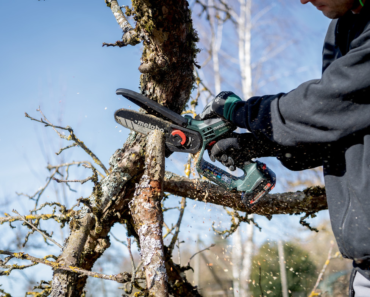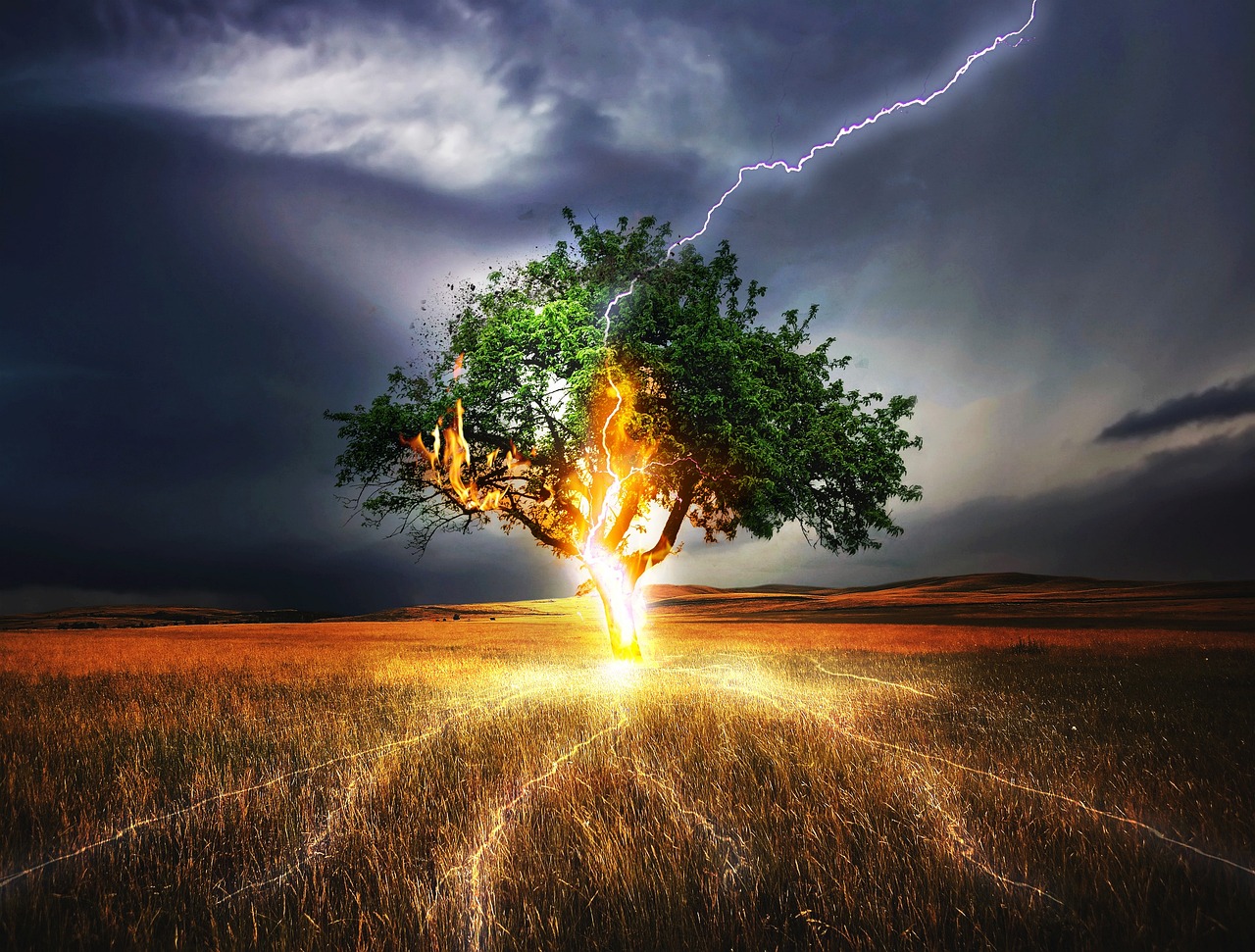Introduction
In the realm of natural phenomena, few occurrences are as astonishing and terrifying as being struck by lightning. It is an event that defies all odds, an encounter with nature’s raw power that leaves a lasting impression on those who survive it. In this in-depth exploration, we will delve into the incredible stories of individuals who have experienced the unimaginable and lived to tell the tale. From the science behind lightning strikes to the harrowing accounts of survivors, this article aims to shed light on the rare and awe-inspiring phenomenon of being struck by lightning.

Part 1: The Science of Lightning
Before delving into the personal accounts of lightning strike survivors, it is essential to understand the science behind this electrifying phenomenon. Lightning is a natural electrical discharge that occurs during thunderstorms when there is a buildup of electrical charges within clouds. Here’s how it happens:
1.1 The Formation of Lightning
Lightning begins with the development of electrically charged particles in storm clouds. As the storm brews, various particles, including ice crystals and raindrops, collide and create an electric charge separation. Positively charged particles gather at the top of the cloud, while negatively charged particles accumulate at the bottom.
1.2 The Lightning Strike
When the electrical tension in the cloud becomes too great to contain, it seeks a path to discharge. This path is often formed by a stepped leader, a branched pathway of ionized air, which descends from the cloud towards the ground. Simultaneously, a streamer ascends from the ground towards the cloud. When these two paths meet, a completed circuit is formed, and a powerful lightning strike ensues.
1.3 The Heat and Power of Lightning
A lightning bolt is a colossal release of energy. In a fraction of a second, it can carry an electric voltage of up to 1 billion volts and heat the surrounding air to temperatures hotter than the surface of the sun, exceeding 50,000 degrees Fahrenheit (27,700 degrees Celsius). This intense heat causes the air around the lightning bolt to expand rapidly, creating a shock wave that results in the thunderclap we hear after seeing a lightning flash.
Part 2: The Odds of Being Struck by Lightning
Before delving into the stories of lightning strike survivors, it’s essential to acknowledge just how rare it is to be struck by lightning. The odds of an individual being struck by lightning in any given year are estimated to be about 1 in 500,000 in the United States, according to the National Weather Service. Over a lifetime, the chances increase slightly, with odds of approximately 1 in 15,300 of being struck and killed by lightning.
These statistics emphasize the rarity of this phenomenon. Lightning strikes are, without a doubt, a freak occurrence in the grand scheme of natural disasters, yet they carry with them an immense destructive potential.
Part 3: Stories of Lightning Strike Survivors
In this section, we will delve into the remarkable and often harrowing stories of individuals who have survived lightning strikes. These survivors have not only defied the staggering odds but have also lived to tell their astonishing tales.
3.1 Roy Cleveland Sullivan: The Human Lightning Rod
Roy Cleveland Sullivan, a park ranger in Shenandoah National Park, holds a Guinness World Record for the most lightning strikes survived by a single person—seven times. His incredible streak of bad luck earned him the nickname “the human lightning rod.”
Sullivan’s encounters with lightning occurred between 1942 and 1977. Astonishingly, he survived each strike, although he suffered various injuries, including burns, hearing loss, and muscle atrophy. The lightning left scars on his body, both physical and psychological, as he lived in perpetual fear of the next strike. His story serves as a testament to both the randomness and resilience of lightning strike survivors.
3.2 Lightning Strike Survivors Worldwide
While Roy Sullivan’s story is particularly extraordinary due to the frequency of his lightning strikes, there have been countless lightning strike survivors worldwide who have endured the impossible. Survivors often endure physical and emotional challenges on their journey to recovery.
Common effects of lightning strikes include:
- Burns: Lightning can cause severe burns at the entry and exit points of the strike. These burns can vary in severity, from superficial to deep tissue damage.
- Neurological Damage: Lightning can affect the central nervous system, leading to neurological issues such as memory loss, mood swings, and difficulty concentrating.
- Post-Traumatic Stress Disorder (PTSD): Survivors of lightning strikes often experience PTSD due to the traumatic nature of the event. They may develop a fear of storms or other psychological symptoms.

Part 4: Remarkable Survival Strategies
Lightning strike survivors often attribute their survival to a combination of luck and quick thinking. While it is impossible to predict or control lightning strikes, there are strategies that can improve one’s chances of surviving a thunderstorm:
4.1 Seek Shelter
The most crucial step in lightning safety is seeking shelter during a thunderstorm. If you hear thunder or see lightning, it’s time to head indoors. A sturdy building with wiring and plumbing provides excellent protection. Avoid small structures, open fields, and tall objects, which are more likely to be struck.
4.2 Lightning Safety in Vehicles
If you are caught in a thunderstorm while driving, remain in your vehicle. Modern vehicles are designed to disperse lightning strikes safely. Roll up windows, avoid touching metal surfaces inside the car, and wait until the storm passes before continuing your journey.
4.3 Avoid Water and Electrical Appliances
Water and electricity don’t mix well, especially during a lightning storm. Stay away from water bodies, such as lakes and swimming pools, and avoid using electrical appliances, including landline phones, during a storm.
4.4 The 30-30 Rule
The 30-30 rule is a simple guideline for assessing the distance between you and a thunderstorm. If you see lightning and hear thunder within 30 seconds of each other, seek shelter immediately. Wait at least 30 minutes after the last clap of thunder before resuming outdoor activities.
Part 5: Conclusion
Being struck by lightning is an extraordinarily rare event, but it leaves an indelible mark on those who experience it. The science behind lightning strikes is a testament to the awe-inspiring power of nature. While the odds of being struck are minimal, it is essential to take precautions during thunderstorms to protect ourselves and those around us.
The stories of lightning strike survivors, such as Roy Sullivan and countless others, are a testament to the human spirit’s resilience and ability to endure the seemingly impossible. These survivors have faced the unimaginable and emerged stronger, inspiring us to appreciate the unpredictability of nature while taking steps to stay safe.
As we continue to study and understand lightning, it remains vital to heed the safety guidelines and precautions, ultimately reducing the risk of becoming part of the remarkable but fortunate group of lightning strike survivors.




